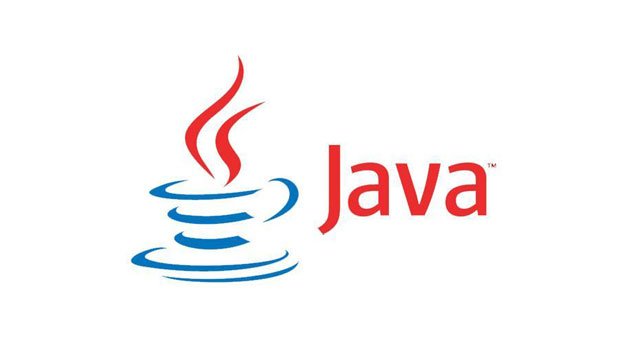More often than not, you will be making your application utilizing the IDEs Android Studio and Eclipse. What’s more, more often than not, you will be relocating view components, modifying their properties, and including some minor changes that should be possible with a couple clicks.
Tragically, those activities have their points of confinement. What’s more, to be completely forthright, you are simply building up the tip of the ice sheet — the application’s outline. Anyway, the fact of the matter is that you are required to sort in a couple lines of code to ensure that your application will work only the way you need it.
To create Android by physically composing source code, you should learn and get acquainted with Java and XML. Java is a programming dialect. XML, then again, is a markup dialect. Records written in Java closes with the .java augmentation, while documents written in XML closes with the .xml expansion.
For the most part, when managing Java in Android improvement, you are really composing your project’s code. Especially, every one of the things that happen in your application will be reliant on your application’s java code.
In Android Studio, your application’s principle java document is situated at application > src > fundamental > java > com.example.admin.myapplication (or your application’s converse space or bundle name) > MainActivity (or any name that you have relegated for your project). On the off chance that that you are going to utilize Eclipse, the principle java record ought to be situated at src > your application’s bundle name > application name.java.
Then again, you will be essentially managing XML on the off chance that you are going to alter your application’s action and certain assets. For instance, you will be altering the XML records for your exercises spared in the application > src > primary > res > format. Likewise, you will be altering the XML document for the string values in your application in application > src > fundamental > res > values > javastrings.xml.
Java Programming
 Learning Java in one go can be an agony. Be that as it may, you don’t have to ace Java keeping in mind the end goal to make a not too bad Android application. The critical thing you ought to learn is the means by which to compose Java code legitimately by tolerating to its language structure manages and acquainting yourself with programming as a rule.
Learning Java in one go can be an agony. Be that as it may, you don’t have to ace Java keeping in mind the end goal to make a not too bad Android application. The critical thing you ought to learn is the means by which to compose Java code legitimately by tolerating to its language structure manages and acquainting yourself with programming as a rule.
Linguistic structure is an accumulation of principles in a language or programming languages. You can consider it syntax rules in composing English sentences and sections. Taking in the linguistic structure of a programming dialect is vital. Observe that one little sentence structure botch in your source code’s can destroy your application or make it act the way you would prefer not to.
In any case, even before you do take in the tenets, you should take in the parts of the Java dialect. All things considered, taking in the language structure rules in English is pointless in the event that you don’t know where those standards apply — for English’s situation, those guidelines apply to the parts of the sentence.
Identifiers: Name used for classes, methods, interfaces and variables
Identifiers are names in programming dialects. It can be utilized as a source of perspective for an article, a name for a capacity, or a name for a variable. Identifiers make it simpler for developers to appoint, summon, and utilize different components in the system.
Java components require names. Name used for classes, methods, interfaces and variables are called Identifier. Identifier must follow some rules:
- A Java keyword cannot be used as an identifier.
- All identifiers must start with either a letter( a to z or A to Z ) or currency character($) or an underscore.
- Identifiers in Java are case sensitive, foo and Foo are two different identifiers.
- After the first character, an identifier can have any combination of characters.
With regards to linguistic structure, observe that Java is case delicate. A variable with an identifier X is not the same as a variable with an identifier X.
Most Java software engineers have naming traditions that they take after while making identifiers. Composing letter case isolated words (or CamelCase) is the most widely recognized naming tradition for Java software engineers.
At the point when managing identifiers with different words, those words are isolated with a capitalized first letter. For instance: thisIsAVariable is a variable identifier that uses the letter case naming tradition. Incidentally, it is basic that the primary letter of the identifier is in lowercase.
Literals: are a sequence of characters (digits, letters, and other characters)
Literals are the crude information that you present to your source code. There are two basic exacting sorts that you will be utilizing as a part of your application’s source code.
- The primary strict sort is numbers
- The second sort is strings
Coincidentally, strings are content encased in single or twofold citations. They are encased in citations to keep the compiler of Android Studio in mixing up your content as watchwords, identifiers, or numbers.
Numbers can be spoken to in numerous courses in Java. It can be introduced in decimal, octal, hexadecimal, or double frame. Different sorts of literals incorporate Boolean values (truth values: genuine and false), invalid, and character. Types of literals are:
- Integer literals
- Character literals
- Floating literals
- Boolean literals
- String literals
Watchwords: are identifiers that are held for extraordinary capacities
Since they are held, you can’t utilize them as identifiers for alternate components in your system. At the point when utilizing a source code supervisor or your IDE’s content manager, watchwords are highlighted with an alternate shading — more often than not with blue — for you to effectively distinguish them. In Java, there are around 50 catchphrases.
Variables are identifiers that “hold” information or literals
At whatever point you allocate literals to identifiers, they get to be variables. Not at all like in other programming dialects, you have to pronounce a variable and set the sort of strict it can store.
Code Blocks: Chunk of code that’s surrounded by a matched pair of curly braces: { }
Code squares are similar to sections in the English dialect. A code square contains various arrangements of proclamations (or lines of codes), that cooperate to accomplish a solitary objective. Sometimes, the announcements in code squares are simply assembled to perform a cluster of summons in one go.
Code pieces are utilized at whatever point you should make strategies or classes — two things that you will realize when you progress in Java or Android application improvement. To contain the announcements inside of a code piece, they are encased inside wavy props ({}) or separators.
public class Hello{
public static void main(String arg[]){
System.out.println("Hello.");
}
}
In the case, another extension was made inside the code square. Observe that anything that you do in an alternate extension is free from other parent or kin degrees. For instance, the variable b can’t be utilized outside its degree. Notwithstanding, tyke degrees can utilize the variables from guardian scopes. You can utilize the aVariable inside the youngster degree.
Incidentally, space in code squares is a bit much when programming utilizing Java. Be that as it may, they do make your source code neater and more clean.
Remarks
At the point when writing source code, there will be times that you should place markers, clarifications, or names in your announcements. This is when remarks get to be helpful. Remarks in programming dialects are lines of content that are overlooked by the compiler or translator. They really have no utilization for the PC or project, however they are essential apparatuses for the software engineer.
It is normal in source code editors that remarks are highlighted in green. Nonetheless, in Android Studio, remarks are highlighted in dark and stressed.
At the point when programming in Java, you have three strategies or sorts that you can use to make remarks. They are documentation remarks, end of line remarks, and customary remarks.
Administrators and Expressions
Writing computer programs is for the most part about operations and assessment of information. In Java, different administrators are accessible for to utilize. Some of them manage controlling numbers, including fundamental Mathematical operations. A few manages strings. What’s more, some will furnish you with project control stream. Then again, observe the term expressions. Expressions are mixes of literals, worth giving catchphrases or techniques, administrators, and variables that can be assessed
Explanations, Physical Line, and Logical Line
In Java, an announcement will be considered in that capacity on the off chance that it closes with the semicolon (;) separator. At whatever point you wrap up a legitimate line, always remember to incorporate a semicolon. If not, you will get a linguistic structure blunder. Then again, a physical line is a line of code in programming. A physical line can or can’t be an announcement. As you may have seen in source code editors, each line in the supervisor is numbered. A line of content or code is a physical line.
EXtensible Markup Language (XML)
XML was designed to store and transport data.
Essentially, you won’t be composing an excessive amount of XML in your application on the off chance that you are going to utilize IDEs. All things considered, a large portion of the XML composing errands you will do ought to be devoted in outlining your application’s appearance. Subsequent to the IDEs will do the written work for you when you move and customize the perspectives that you need to show up, XML composing ought not be a major issue.
In any case, on the off chance that you need full control of your application’s properties and appearance, then it is fundamental that you alter your application’s XML documents on your source code supervisor. Try not to stress; contrasted with Java programming, XML composing is much less demanding.
In the event that you are acquainted with HTML (HyperText Markup Language), then it will be simple for you to comprehend XML (eXtensible Markup Language). XML is in fact like HTML. The primary distinction is that XML is much less difficult and straight to the point. Machines and people (the individuals who are acquainted with XML obviously) can without much of a stretch comprehend it.
Substance and Markup
Substance is the data that clients will see once the XML document is prepared. In Android, that is the action screen and the components you add to it. Then again, markups are words, catchphrases, and language structure that permit you to characterize substance and let the machines realize what to do with your substance.
Components, Opening, Closing, and Empty Element Tags
Labels are component names encased in chevrons (< > or not exactly and more noteworthy than signs). XML components or labels rely on upon the machine that will read it. For instance, XML records for Android applications can’t be handled the same path by different machines not running on Android. In any case, it doesn’t imply that it can’t be perused. For instance, different machines have no utilization.







